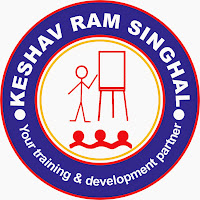Implementing an effective quality management system requires performance evaluation that includes monitoring, measurement, analysis and evaluation. Clause 9.1.3 of ISO 9001:2015 QMS Standard requires analysis and evaluation of appropriate data and information arising from monitoring and measurement. Methods to analyse data can include statistical tools and techniques. There are a number of statistical tools and techniques available for monitoring, measuring, analyzing and evaluating the organization’s processes. We are starting a series of articles under the heading ‘Understanding Statistical Tools and Techniques’. Some of the tools and techniques are as under:
- Problem solving approach ‘DRIVE’
- Brainstorming
- Cause and effect diagram – CED – Fishbone diagram – Ishikawa diagram
- Cause and effect diagram with addition of cards – CEDAC
- Check sheet
- Control chart
- Histogram
- Pareto analysis
- Scatter diagram
- Stratification
- Process mapping
- Process flowcharting
- Force field analysis
- Bar chart
- Matrix analysis
- Tally chart
The use of statistical techniques helps organization in understanding variability. It helps organizations to solve problems. It also helps organization to improve effectiveness and efficiency. The statistical techniques also facilitate better use of available data to assist in decision making. Seven tools from the above are known as basic quality tools. These are:
- Cause and effect diagram – CED – Fishbone diagram – Ishikawa diagram
- Check sheet
- Control chart
- Histogram
- Pareto chart
- Scatter diagram
- Stratification

Relevant requirements of ISO 9001:2015 QMS Standard (Clause 9.1) are summarized as under:
"Determine - (i) Monitoring and measurement needs, (ii) Monitoring, measurement, analysis and evaluation methods (Purpose - To ensure valid results), (iii) When to perform monitoring and measurement, (iv) When to analyze and evaluate the monitoring/measurement results, (v) Methods (such as using customer survey, customer feedback, customer meeting, market-share analysis, compliments, warranty claims, dealer report) for obtaining, monitoring and reviewing customers' perception information
Monitor/review/analyze/evaluate - (i) QMS performance and effectiveness, (ii) Customers' perception information.
Analyze and evaluate - (i) Monitoring/measurement data/information.
Use analysis results and evaluate - (i) Product/service conformity, (ii) customer satisfaction, (iii) QMS performance and effectiveness, (iv) Planning implementation effectiveness, (v) Actions effectiveness to address risks and opportunities, (vi) External providers performance, (vii) QMS improvement needs
Retain documented information - Evidence of monitoring / measurement / analysis / evaluation results.
Clarification - Statistical technique can be a method to analyze data."

To improve organization’s processes by means of a systematic approach, people working in the organization require the knowledge of simple kit of statistical tools and techniques. The person who actually works on the processes needs to understand these tools and techniques, so that he can effectively use these tools and techniques. Some may think that these tools are complex and require higher knowledge of Mathematics or Statistics. However, we will make the study of these tools and techniques in a language easy to understand. We request our readers to please send/post your comments. Short-term training 'Understanding Statistical Tools and Techniques' can be organized in your organization.
Hope the readers would find the series of articles interesting and useful.
- Keshav Ram Singhal

No comments:
Post a Comment